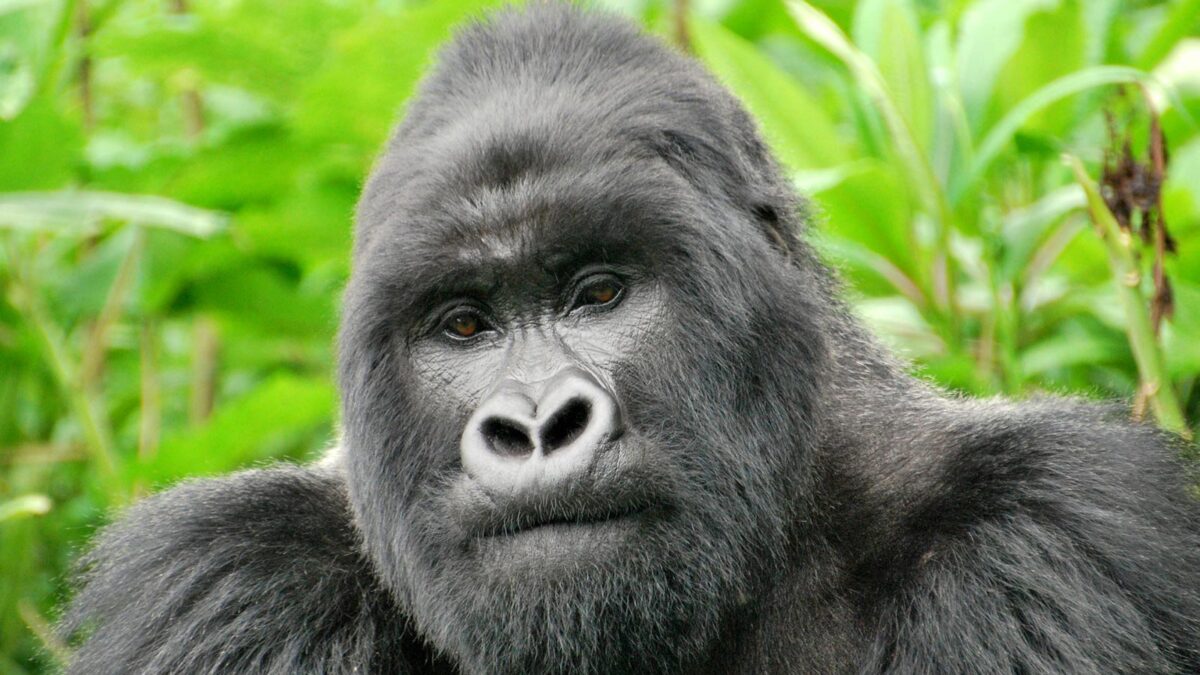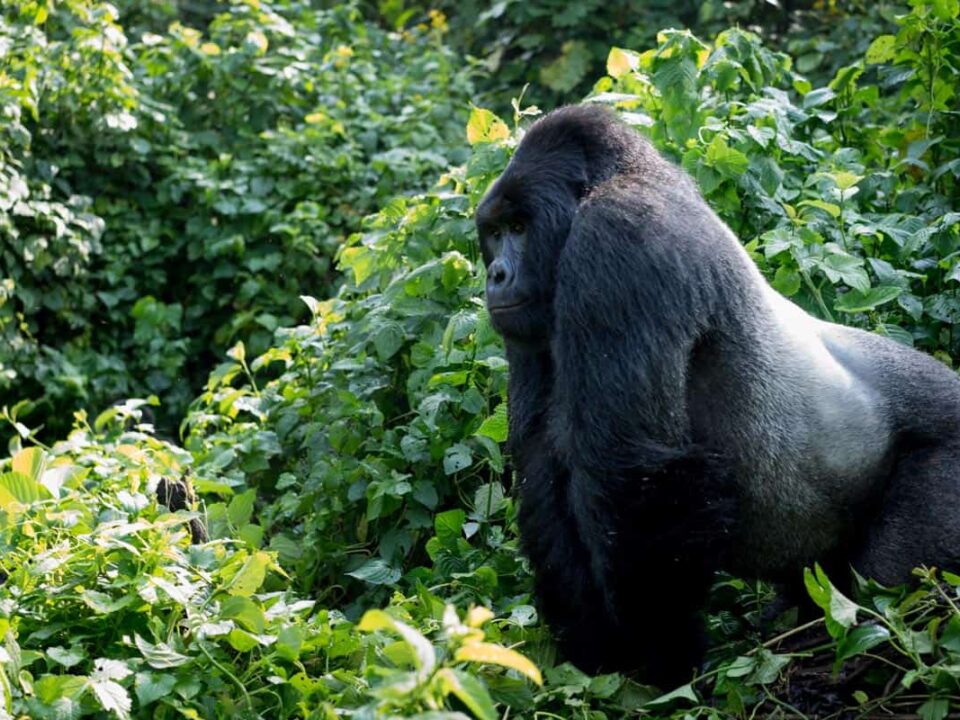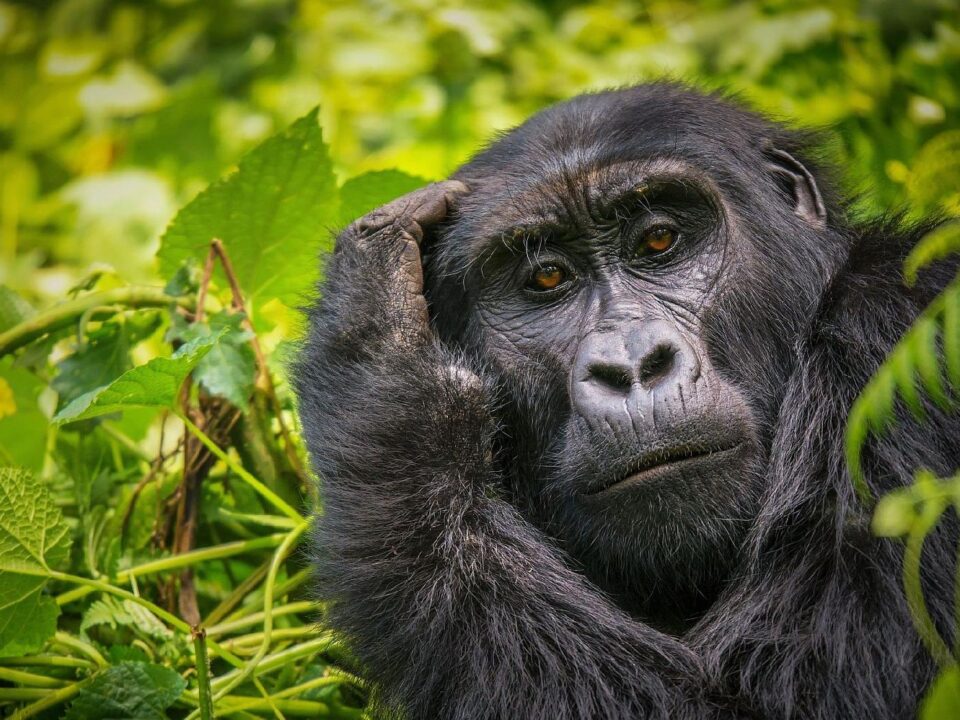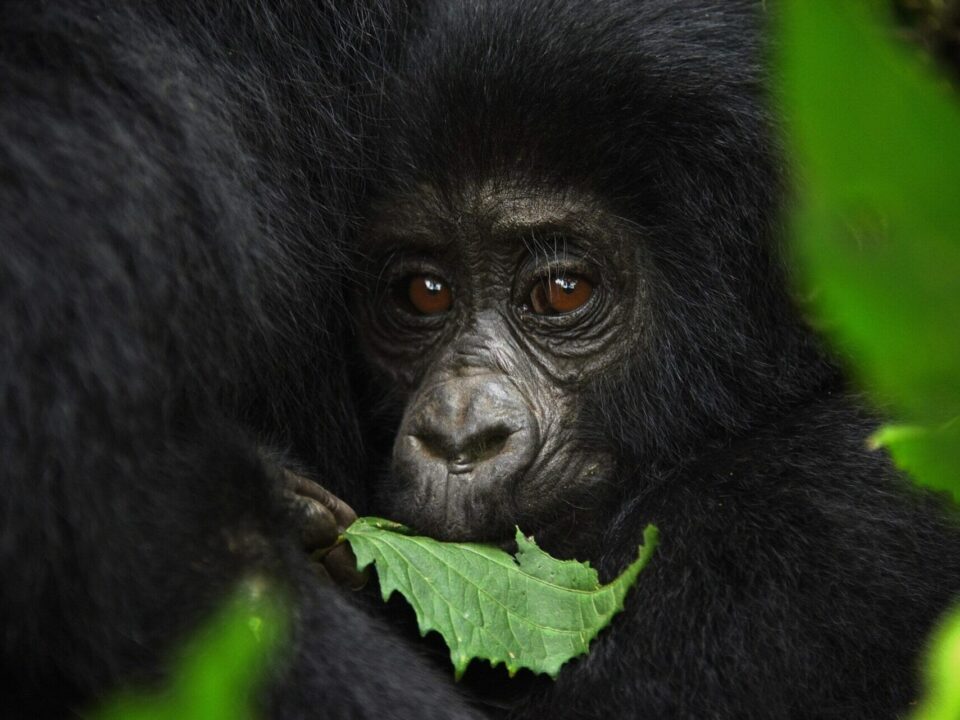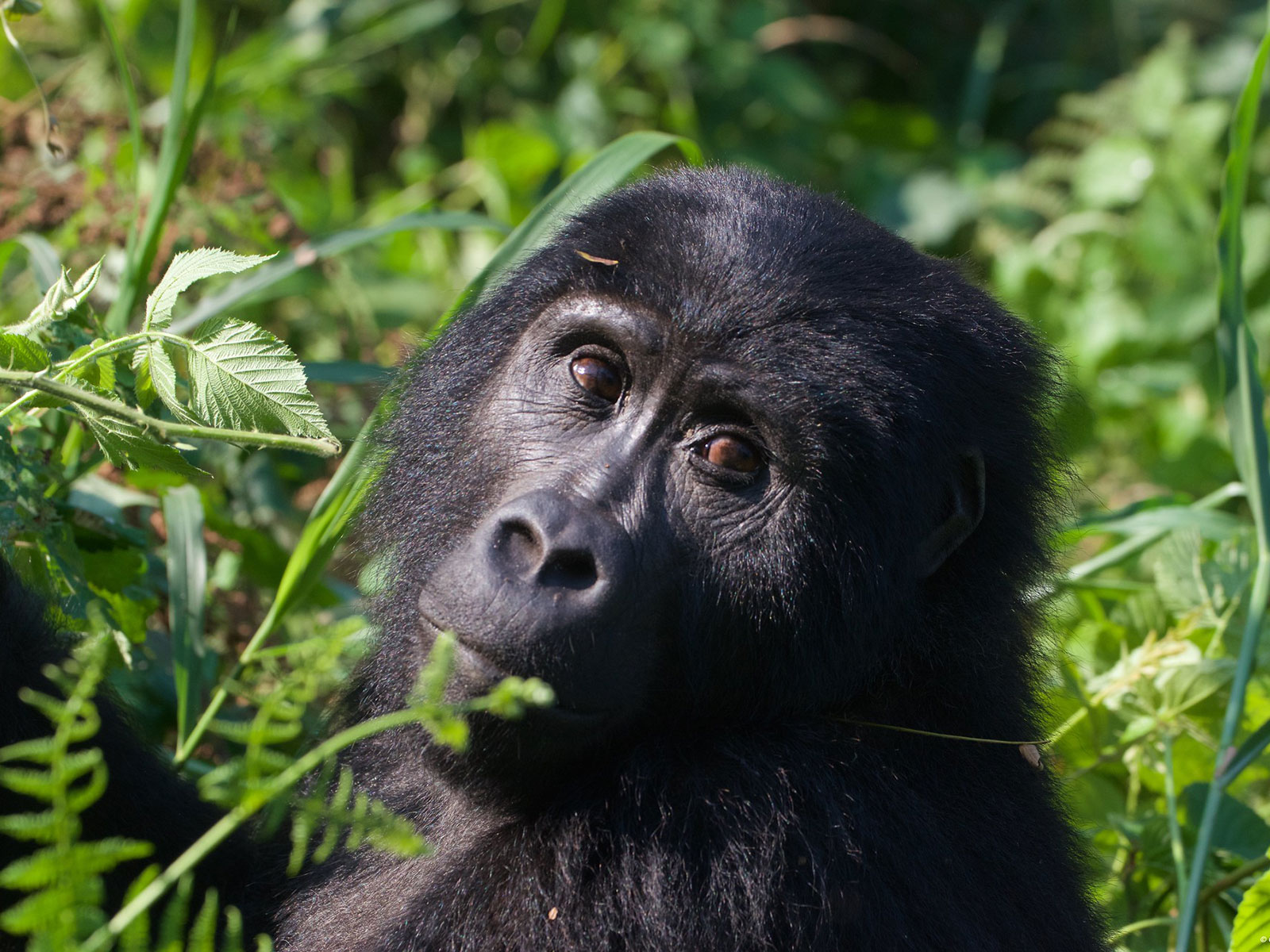
Uganda Gorilla Trekking Cost and Pricing Unveiled
August 15, 2023
Uganda Adventure Gorilla Safari
August 16, 2023Mountain Gorilla Information: A Closer Look at the Genus Gorillas
Belonging to the primate family, the genus Gorillas stands as a prominent representative of the great apes, holding the title of being the largest among them. In the evolutionary hierarchy, Gorillas emerge as one of humanity’s closest living relatives, surpassed in similarity only by the Chimpanzee and the bonobo. These magnificent creatures inhabit the lush embrace of tropical rain forests within the equatorial expanse of Africa. Within the sphere of scientific consensus, the genus is acknowledged to comprise two distinct species and a total of four subspecies. Notably, the western Gorillas, scientifically identified as Gorilla gorilla, exhibit a division into two subspecies. These include the western lowland Gorilla (G. gorilla gorilla), dwelling within the expansive lowland rain forests extending from Cameroon to the Congo River, and the Cross River Gorilla (G. gorilla Diehl), residing within the confines of a small forested enclave along the Cross River that serves as the demarcation between Nigeria and Cameroon.
Conversely, the eastern Gorilla (G. beringei) also exhibits a bifurcation into two subspecies. Among these, the eastern lowland Gorilla, also known as Grauer’s Gorilla (G. beringei graueri), is confined to the precincts of the lowland rainforests of the eastern Democratic Republic of Congo. In contrast, the Mountain Gorillas (G. beringei beringei) inhabit the lofty terrains north and east of Lake Kivu, ensconced within the embrace of montane rainforests and bamboo-enveloped domains. This highland sanctuary straddles the borders of Uganda, Rwanda, and Congo, providing a picturesque backdrop to their existence.
Physical Characteristics and Lifestyle of Gorillas
Endowed with extraordinary power, Gorillas present an imposing stature, characterized by a robust chest and a protruding abdomen. Their ebony skin and hair create a striking visual contrast. Notable facial features include spacious nostrils, petite ears, and prominent brow ridges. Adult Gorillas exhibit lengthy, muscular arms that exceed the length of their stocky legs by 15-20 percent. The males stand out in terms of size, typically outweighing their female counterparts by twofold. In the wild, they reach heights of approximately 1.7 meters (5.5 feet) and boast a weight range spanning 135–220 kg (300–485 pounds). However, captive Gorillas may attain even greater proportions due to excess weight. In contrast, adult females generally stand around 1.5 meters in height and weigh about 70–90 kg.
Remarkably, Gorillas boast hairless faces, hands, and feet, while aged males display a bare chest. Among the subspecies, G. beringei beringei showcases longer hair compared to the other three. Fully developed males exhibit a distinctive cranial crest and a “saddle” of gray or silver hair along the lower back, resulting in the term “silverback” often used to denote mature males. This saddle is particularly conspicuous in eastern Gorillas (G. beringei), which exude a jet-black hue. In contrast, western Gorillas (G. gorilla) sport a deeper gray-brown tone, rendering their saddle less conspicuous.
Social Dynamics and Behavior
Gorillas thrive within stable family units, their numbers ranging from 6 to 30 members. These groups are under the leadership of one or occasionally two silverback males, who frequently share a familial connection, typically as a father-son duo. At times, sibling pairs also ascend to leadership roles. The remaining members comprise females, juveniles, infants, and young adult males (blackbucks). Adult females occasionally integrate into groups from external sources, while the offspring belong to the domain of silverbacks.
The diurnal rhythm governs Gorilla activities, with their terrestrial tendencies well-documented. Their preferred mode of movement involves walking on all fours, where their knuckles share the burden of their weight. This unique knuckle-walking trait is shared with their chimpanzee relatives. Gorillas resort to an upright posture, often during displays of dominance. Notably, females and young individuals display a greater penchant for climbing, attributed to the inability of much vegetation to support the weight of adult males.
Dietary Preferences and Habitat
Vegetarian by nature, Gorillas adopt diverse dietary preferences based on their subspecies. Eastern Gorillas incorporate leaves, stalks, and shoots into their meals, whereas western Gorillas lean more heavily toward a fruit-based diet. Remarkably, despite their general aversion to water, certain groups venture into waist-deep swamp clearings, particularly within regions such as the Sangha-Ndoki area, to consume aquatic plants.
Gorillas allocate a significant portion of their time to foraging and resting, traversing several hundred meters daily between various feeding sites. The confines of their home range span between 2 and 40 square kilometers (0.77–16 square miles). It’s noteworthy that multiple distinct groups can coexist within the same forest sector. As the day concludes, each Gorilla constructs its own rudimentary sleeping nest, employing branches and foliage. These nests vary each night, being established either on the forest floor or nestled within the trees.
Communication and Social Hierarchy
Despite their imposing size, Gorillas are relatively quiet beings, with their communication repertoire encompassing grunts, hoots, an unsettling alarm bark, and the resounding roar that signifies aggression among males. Contrary to prevalent misconceptions, studies reveal that Gorillas are not inherently aggressive, often demonstrating shyness, especially when unduly disturbed. Interlopers are confronted by the leading silverback, who resorts to aggressive displays as a safeguard for the group.
Aggressive posturing often encompasses chest beating, vocalizations, and brief rushes toward intruders. While both males and females partake in chest beating, its resonance is more pronounced in males due to air sacs enhancing the sound. Chest beating frequently accompanies rituals that encompass lateral running, vegetation tearing, and ground slapping. Beyond intimidation, these displays facilitate intergroup communication and reinforce the dominance hierarchy within the group.
Cognitive Traits and Breeding Patterns
Although Gorillas may lack the inquisitiveness and adaptability seen in their chimpanzee counterparts, they compensate with their calmer and more persistent demeanor. They display an intriguing aptitude for acquiring sign language from humans, akin to chimpanzees. In some instances, Gorillas even exhibit self-awareness, recognizable by their ability to identify their own reflection in a mirror. This trait aligns them with both chimpanzees and orangutans, underscoring their remarkable cognitive abilities.
Gorilla reproduction is a gradual process, with wild females giving birth approximately once every four years. Their breeding cycle lacks a fixed season, and gestation spans about eight and a half months. Typically, Gorillas birth a single offspring, although rare instances of twins have been documented. A newborn Gorilla tips the scale at a mere 2 kg and remains entirely dependent on its mother’s care for the first three months. During this phase, the infant is cradled in its mother’s arms and shares her nest at night.
As time advances, female Gorillas reach reproductive maturity around the age of 10. Subsequently, they transition to a different group or to a solitary silverback. Male Gorillas achieve sexual maturity around age 9, but reproduction typically commences when they mature into physically robust silverbacks around the age of 12–15. In their quest to establish family groups, young male Gorillas occasionally employ aggression, even resorting to “kidnapping” females, sometimes with fatal outcomes for infants. The lifecycle of male Gorillas follows a variety of paths, ranging from forming their own family units to inheriting leadership roles within their birth group. Life expectancy for wild Gorillas hovers around 35 years, although captives have been known to survive into their 40s.
Challenges and Conservation Efforts
Regrettably, the Gorilla’s once abundant presence has dwindled due to extensive habitat loss from human-driven deforestation, as well as historical big-game hunting and the captive trade for zoos and research purposes. More recently, bushmeat hunting, particularly to sustain logging operations, has emerged as a notable threat. Concerning the eastern Gorilla subspecies, the International Union for Conservation of Nature (IUCN) designates both the eastern lowland Gorilla (G. beringei graueri) and the Mountain Gorilla (G. beringei beringei) as critically endangered.
Mountain Gorilla populations are particularly concerning, with a mere 900 adult individuals remaining. Their plight can be attributed to ongoing habitat loss from farming, grazing, and human habitation, including the detrimental impact of refugees. However, a glimmer of hope arises from the realm of ecotourism, wherein visitors venture to witness these creatures in their natural habitat, consequently aiding in their conservation.
Interestingly, the western lowland Gorilla population experienced a significant uptick in population estimates after the discovery of an undisclosed group in 2008. This newfound population, exceeding 100,000 individuals, thrives within the marshes of the Democratic Republic of the Congo, offering a ray of optimism amid the broader conservation narrative.

